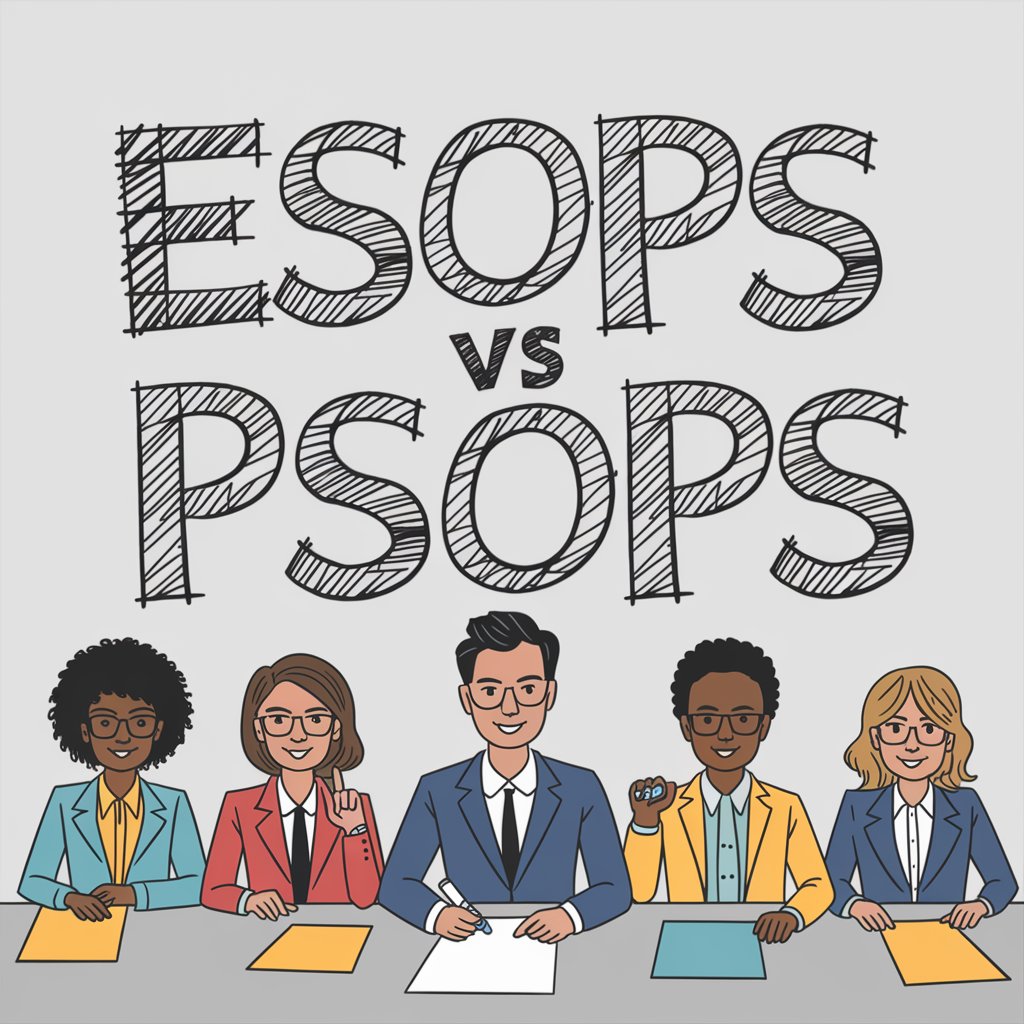Imagine the hours you and your team put in: the long days, the sleepless nights, and the endless push toward making your startup a success. As founders or managers, you aim to build something sustainable, something that thrives even as new challenges emerge. But that fire to conquer the challenges is not going to light up on its own.
That fire can be brought only if the employees feel aligned to the cause, have a sense of belonging and for the ones having an entrepreneurial mindset, if they feel that the business is their own.
And that’s what we’re going to discuss here – two ways of making the employees the owners in the business.
Employee Stock Option Plans (ESOPs) and Phantom Stock Option Plans (PSOPs) —powerful tools that can align the futures of your team and your business.
What are ESOPs and PSOPs?
- Employee Stock Option Plans (ESOPs) give your employees a stake in the company, transforming them from mere team members into part-owners. ESOPs are like ring tosses —when employees put in effort and lock a particular milestone, they’re rewarded with a slice of ownership. If things go well, both the business and its employees benefit financially.
- Phantom Stock Option Plans (PSOPs) work a bit differently. Think of them as “phantom shares”—they don’t give actual shares, but the employees receive cash benefits when the options are bought back or when the company is acquired. This approach can work like a cash bonus, closely linked to the company’s success.
If ESOPs don’t result in giving shares, why would management consider PSOPs over ESOPs?
Because they offer a win-win situation.
Practically, in a private company (which most startups are), employees are not gonna get much with their share certificate unless there’s someone to buy their shares. So effectively, they will only get something when the shares are sold in an ESOP either to the company or to an acquirer – same as it happens in a PSOP.
Further, PSOPs are cashless. Employees receive net settlements and don’t have to pay an exercise price, which they would have to, in a traditional ESOP scheme.
On the other hand, for the founders, it works because PSOP grantees don’t sit on the company’s cap table. Let’s say, you’ve granted ESOPs to 15 employees at an early stage, and two years later, they all exercise their options. Now you have 15 additional shareholders, each requiring signatures and paperwork for future investment rounds or shareholder agreements. Imagine if some of these employees have left and moved abroad by then—coordination becomes challenging.
PSOPs take this headache away.
Also, you can fire an employee but you cannot fire a shareholder. Once a shareholder, always a shareholder (well, there’s a way, but this write up is too short to discuss). But for a PSOP holder it’s simple – just cancel the phantom stock options. So let’s say if an employee goes rogue, it’s tough to remove them as a shareholder, but quite easy to cancel their phantom stock options.
And something that works for both: these are out of the scheme of the Companies Act, 2013 and so, there’s no mandatory cliff period.
Some common ingredients in making ESOPs and PSOPs
Whether you choose an ESOP or a PSOP, there are going to be some elements you will have to decide before you implement these. Here’s what you will need to arrive at:
- Pool: What is the maximum number or percentage of shares (or notional shares) you want to give out to the employees? The general average is 10%, but depending on the stage of business, size of business, sector and management, it can vary from 5% to 15%.
- Eligibility: Do you want to grant the options when someone stays with you for a particular period? Do you want to grant them only if they achieve a certain performance rating? This is another decision you need to take.
- Vesting schedule: If you want to grant certain options to the employees, what is the period you want to spread these over for vesting? Or will the options vest only when they achieve a specific milestone?
- Exercise price: What is the price (or notional price) of the options you are granting. This depends on the valuation and the projected cash flows and growth over the vesting period.
- Exit terms: What will happen to the options if the employees leave? What will happen if they are fired? What will happen if they retire or die or become subject to disability? All of these will also have to be provided for in the plan.
Conclusion:
In summary, both ESOPs and PSOPs turn dedication into something more lasting—rewarding employees with a stake in the business’s success. Thoughtfully designing and implementing these plans can create the organisation into a workplace people vie for.


